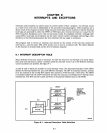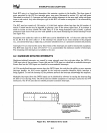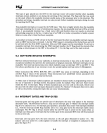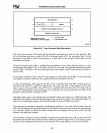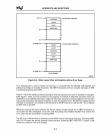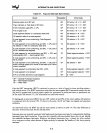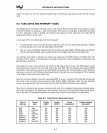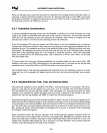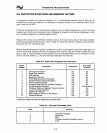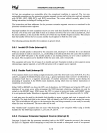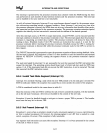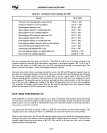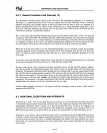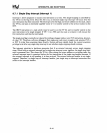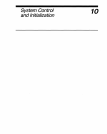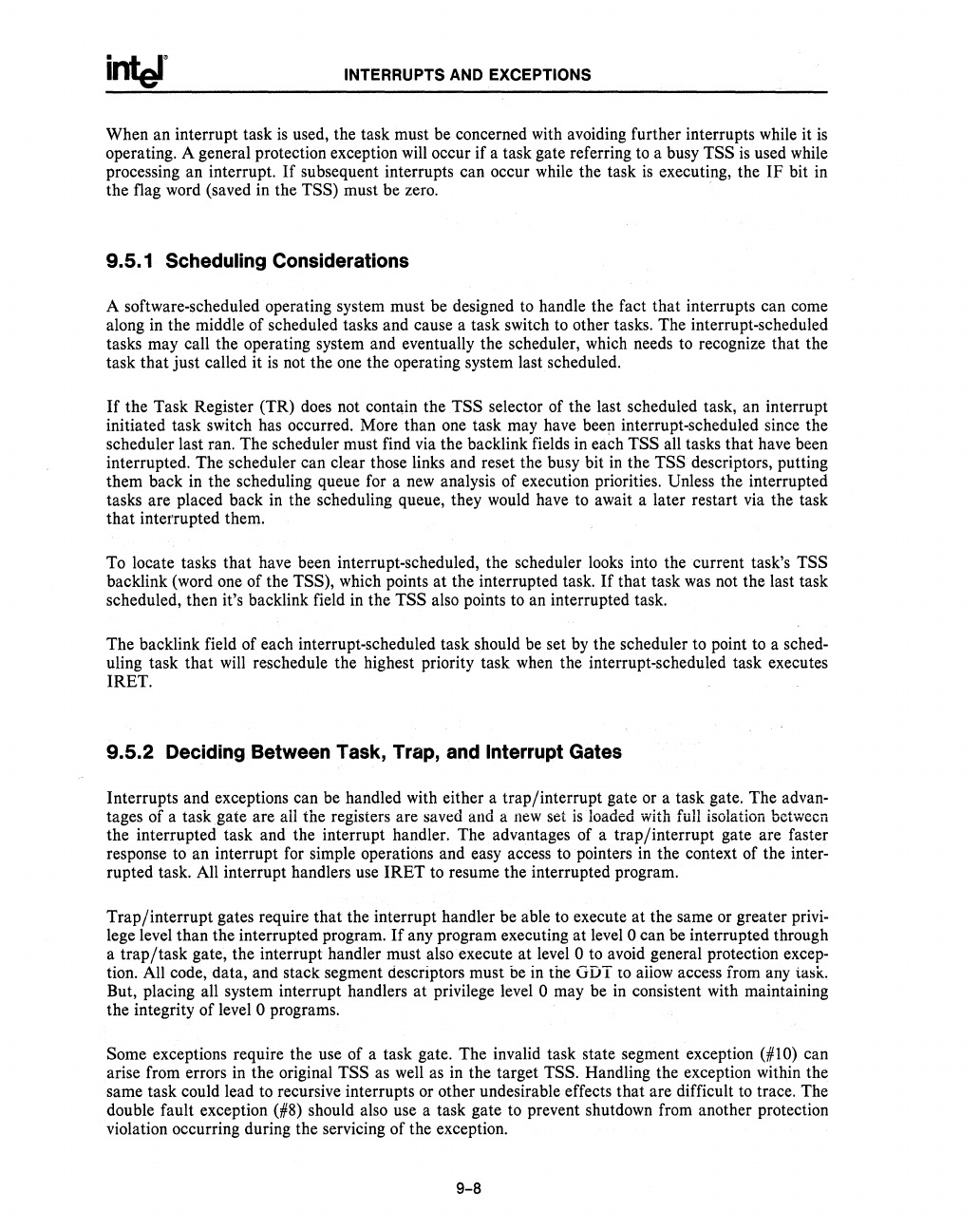
INTERRUPTS AND EXCEPTIONS
When an interrupt task
is
used, the task must be concerned with avoiding further interrupts while it
is
operating. A general protection exception
will
occur if a task gate referring to a busy TSS
is
used while
processing an interrupt.
If
subsequent interrupts can occur while the task
is
executing, the
IF
bit
in
the flag word (saved in the TSS) must be zero.
9.5.1 Scheduling Considerations
A software-scheduled operating system must be designed to handle the fact that interrupts can come
along
in
the middle of scheduled tasks and cause a task switch
to
other tasks. The interrupt-scheduled
tasks may call the operating system and eventually the scheduler, which needs to recognize that the
task that just called it
is
not the one the operating system last scheduled.
If
the Task Register (TR) does not contain the TSS selector of the last scheduled task, an interrupt
initiated task switch has occurred. More than one task may have been interrupt-scheduled since the
scheduler last ran. The scheduler must find via the backlink fields
in
each TSS all tasks that have been
interrupted. The scheduler can clear those links and reset the busy bit
in
the TSS descriptors, putting
them back
in
the scheduling queue for a
new
analysis of execution priorities. Unless the interrupted
tasks are placed back
in
the scheduling queue, they would have to await a later restart via the task
that
interrupted them.
To locate tasks that have been interrupt-scheduled, the scheduler
looks
into the current task's TSS
backlink (word one of the TSS), which points at the interrupted task.
If
that task
was
not the last task
scheduled, then it's backlink field
in
the TSS also points to an interrupted task.
The backlink field of each interrupt-scheduled task should be set
by
the scheduler to point to a sched-
uling task that
will
reschedule the highest priority task when the interrupt-scheduled task executes
IRET.
9.5.2
Deciding Between Task, Trap, and Interrupt Gates
Interrupts and exceptions can be handled with either a trap/interrupt gate or a task gate. The advan-
tages of a task gaie are ail
the registers are saved and a
new
set
is
loaded with full isolation between
the interrupted task and the interrupt handler. The advantages of a trap/interrupt gate are faster
response to an interrupt for simple operations and easy access to pointers
in
the context of the inter-
rupted task. All interrupt handlers use
IRET
to resume the interrupted program.
Trap/interrupt gates require that the interrupt handler be able to execute at the same
or
greater privi-
lege level than the interrupted program.
If
any program executing at level 0 can
be
interrupted through
a
trap/task
gate, the interrupt handler must also execute at level 0 to avoid general protection excep-
tion. All code, data, and stack segment descriptors must be
in
the
GuT
to
aiiow access from any task.
But, placing all system interrupt handlers at privilege level
0 may be
in
consistent with maintaining
the integrity of level
0 programs.
Some exceptions require the use of a task gate. The invalid task state segment exception (#10) can
arise from errors
in
the original TSS
as
well
as
in
the target TSS. Handling the exception within the
same task could lead to recursive interrupts
or
other undesirable effects that are difficult
to
trace. The
double fault exception (#8) should also use a task gate to prevent shutdown from another protection
violation occurring during the servicing of the exception.
9-8




